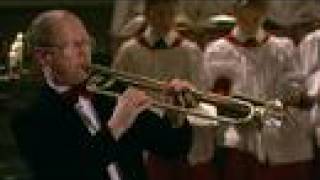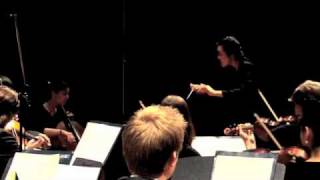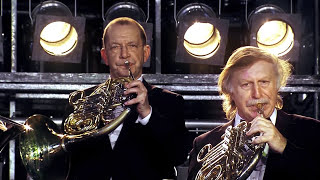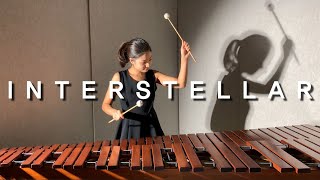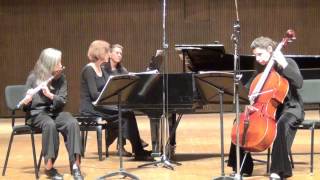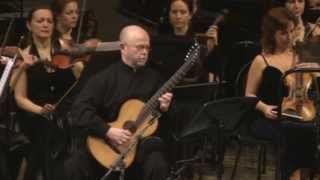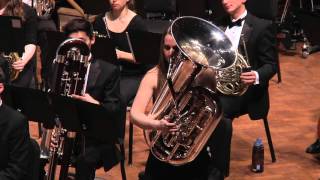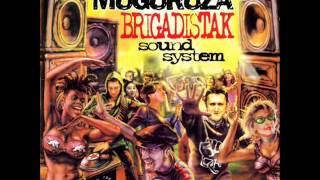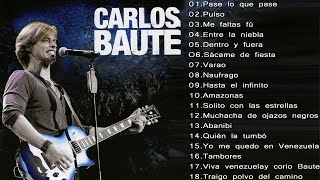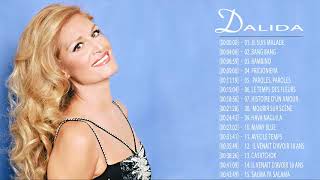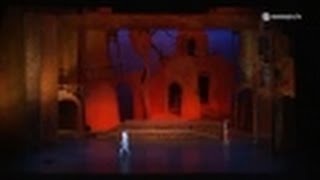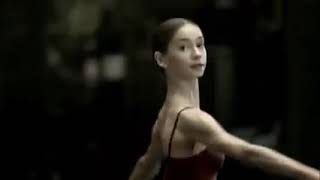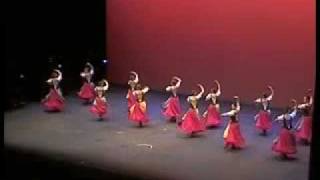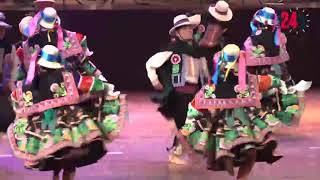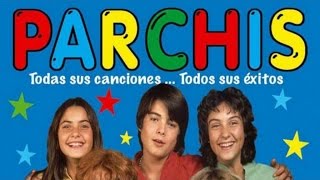Recommended music videos for initiation to classical music
Georg Friedrich Händel ( 1685-1759) was born in Halle , Germany. He was a naturalised Englishman and is one of the greatest figures in the history of music , including the Baroque. As a child he began to receive harmony and counterpoint lessons from Friedrich Zachow , organist in Halle , with whom he also learned to play the oboe, violin and organ. At the age of 18 he moved to Hamburg , where he wrote his first two operas. After three years he travelled to Florence and then to Rome . In 1710 he returned to Germany and from there to London, where he settled for life. Despite the total silence with which he protected his privacy, his homosexuality seems clear. Of his abundant musical production, we must highlight the Oratorio The Messiah , one of the masterpieces of history . He died at his home at the age of 74.
Messiah is an English-language oratorio composed by Georg Friedrich Hände l in 1741, to a biblical text compiled by Charles Jennens. Handel switched to English-language oratorio in the 1730s in response to changing public taste. Messiah was his sixth work in this genre; while the other oratorios are strongly influenced by Italian music, the music of Messiah is rooted in the old German passions and cantatas. Its premiere was in Dublin on 13 April 1742 and was performed almost a year later in London . After a modest initial reception, the oratorio gained popularity and eventually became one of the best-known and most frequently performed choral works in Western music.
Today we offer the aria The trumpet shall sound with bass Alastair Miles and trumpet Crispian Steele-Perkins accompanied by the Brandenburg Consort , all conducted by maestro Stephen Cleobury .
Mozart and Freemasonry . Freemasonry emerged in Europe at the end of the 17th century as a selective philanthropic group with a federal structure and humanistic objectives, such as the search for truth, the study of human behavior, science and the arts, and the social and moral development of people and society; all based on a feeling of brotherhood, whose teachings are symbolized with elements of masonry. Taking these objectives into account, at the age of 28 Mozart entered the Masonic Lodge of Vienna as an apprentice ; the following month he was promoted to the rank of Fellow Mason and four months later he was named Master Mason . Influenced by the Enlightenment, he pursued rationalism, although without joining the occult character of many of his companions.
The catalogue of Mozart's works or Köchel Catalogue ( Köchel Verzeichnis, in German) was created by Ludwig von Köchel in 1862 and lists the musical works composed by Wolfgang Amadeus Mozart . Each of Mozart 's works is designated by a number preceded by the abbreviation K. or KV ; a number that designates the chronological order of its creation and that is really valid for most of the works although some works by other authors appear.
The Magic Flute is an opera that was premiered in Vienna , conducted by Mozart himself two months before his death. The libretto was written by a fellow lodge member, Emanuel Schikaneder , with a plot that points to the struggle between good and evil, light and darkness, knowledge and ignorance; all of which are fundamental approaches to Masonic doctrine. A narrative full of Masonic symbolism in the characters, in the action and even in the musical structures, beginning with the first sounds of the orchestra: three orchestral taps that reflect the three taps that the Masonic candidate makes at the door to request admission.
Today we present the opera's overture offered by the USC Chamber Orchestra conducted by Korean maestro Sey Ahn (1986).
George Gershwin (1898 –1937) was an American composer appreciated for having known how to combine jazz with classical music . From a young age he began to write his first songs and even premiered his first musical on Broadway with his brother Ira as lyricist, a company that he would never abandon. From the age of twenty he began to compose works conceived for concert halls with which he achieved renowned successes. Aware of his formal deficiencies, he traveled to Paris to complete his training with Stravinsky , who after asking him how much money he had earned in a year, replied that it was he who should take classes with Gershwin . Something similar happened with Ravel , who snapped at him: “Why do you want to be a second-rate Ravel , when you can be a first-rate Gershwin ?”
German Brass is a professional brass ensemble, founded in 1974 as a brass quintet. In 1985, in order to record the CD "Bach 300" commemorating the 300th anniversary of the birth of Johann Sebastian Bach , the group was expanded by Enrique Crespo to ten players. At that time the ensemble was renamed German Brass . In 2011, disputes over the trademark rights of German Brass arose between trombonist Crespo and the other members of the ensemble; since then, they have performed without Crespo . To date they have recorded more than twenty CDs and two DVDs. The members of the ensemble are members of major German symphony orchestras and/or are professors at university music schools.
The marimba is a percussion instrument consisting of a series of wooden slats of different sizes, arranged from largest to smallest, each with a different pitch, which are struck with mallets to produce musical notes. Each key has its own resonance box and the set is fixed on a frame with legs. The first marimba on record dates back to 1545 in the municipality of Jiquipilas , Chiapas; it is believed that xylophones arrived in America by means of African slaves who had been taken to Guatemala and Mexico . The term marimba comes from Bantu , although this word is not used in Africa . On the other hand, the marimba is one of the national symbols of Guatemala and Costa Rica .
Interstellar : Refers to the film directed by Christopher Nolan , whose film music was composed by Hans Zimmer and whose main theme is First Step. The soundtrack won critical acclaim. Before being released digitally, it was nominated for an Academy Award and earned a nomination in the Original Score category by the Hollywood Music in Media Awards .
Recommended classical music videos
Andrea Gabrieli (c. 1533 – 1585) was an Italian composer and organist of the late Renaissance , the first internationally renowned member of the Venetian School of composers. He was influential in spreading the Venetian style both in Italy and in Germany , where he met and became friends with Orlando di Lasso . In 1566 he obtained a position as organist at St Mark's Basilica , one of the most prestigious musical posts in northern Italy , which he held for the rest of his life. Around this time he acquired and maintained a reputation as one of the world's greatest composers. Gabrieli wrote a great deal of music, including sacred and secular vocal music, music for mixed groups of voices and instruments, and purely instrumental music.
Today we offer a collection of Motets for the Blessed Virgin Mary by this author performed by the Jean Tubery Académie Concert
The Austrian composer Joseph Haydn (1732-1809), whose brother Michael Haydn was also a notable composer, was one of the main pillars on which classicism was based (1750-1820). At the age of six he began his musical studies on harpsichord and violin. At the age of eight he was admitted as a chorister at St. Stephen's Cathedral in Vienna where he continued his studies in singing, piano and violin. After losing his voice, he had to survive by working in various jobs, while studying composition by analysing the works of Carl Philipp Emanuel Bach . He maintained a close friendship with Mozart and was Beethoven 's teacher . He laid the main foundations of the sonata form and the formal structure of the string quartet and the symphony. He died at the age of 77 in Vienna .
The catalogue of Haydn's works . The works of Joseph Haydn are now classified according to the system devised by Anthony van Hoboken. Each work is identified by a Roman numeral corresponding to the category, which in most cases is identified by a genre. Some categories have subdivisions, which are indicated by a lower-case letter followed by an Arabic numeral corresponding to the order of the particular work within the category. These numerals are preceded by the word Hoboken (in memory of the author of the catalogue) and sometimes by Hob (his abbreviation).
The Piano Trio in D major, Hob. XV:16 that we offer today is structured in three movements: I (0´00´´) ALLEGRO .-. II (7´45´´) ANDANTINO PIU TOSTO ALLEGRETTO .-. III (10´54´´) VIVACE ASSAI. The interpretation of the video that we offer today is in charge of the Noga Trio
Mauro Giuliani (1781-1829) was an Italian composer and guitarist, son of Michele Giuliano and Antonia Tota ; he had a brother, Nicola , an opera composer and singing teacher in St. Petersburg . Mauro began studying counterpoint and cello, although the six-string guitar became his main instrument at an early age. He began composing at a very young age, highlighting the Mass that he wrote when he was only 16 years old. In 1806 Giuliani settled in Vienna where he premiered his Concerto for guitar and orchestra op. 30 with great success and where he composed more than 200 works for guitar, becoming a reference for classical guitar in Vienna . He died in 1829 at the age of 47.
Catalogue of Giuliani's works . His works are classified by their Opus number (from the Latin opus 'work'; op. abbreviation) which is a term used in music to catalogue the works of most composers since the 17th century .
Today we present the Guitar Concerto op. 30 No. 1 by Mauro Giuliani articulated in three movements: I (0´01´´) ALLEGRO MAESTOSO .-. II (15´ 55´´) ANDANTINO SICILIANO .-. III (21' 25´´) RONDO. It is offered to us by the Czech guitarist Pavel Steidl .
Michael Daugherty (born 1954) is an American composer, pianist, and teacher. Influenced by popular culture, Romanticism, and Postmodernism, Daugherty is one of the most colorful and widely performed composers of concert music of his generation. Daugherty is currently Professor of Composition at the University of Michigan's School of Music, Theatre, and Dance . Since 2003, his music has been published by Boosey & Hawkes and before that by Peermusic Classical .
Reflections on the Mississippi for Tuba and Symphonic Band . Below is an excerpt from Daugherty ’s remarks about the Concerto: “This concerto, composed in memory of my father, Willis Daugherty (1929-2011), is a musical reflection on my childhood family trips to the Mississippi River near McGregor, Iowa. In the concerto’s first movement, “ MIST ” (0’36’), I reflect on the sunrise seen and heard through a mist over the Mississippi River. The title of the second movement, “ FURY ” (6'15"), recalls the churning of the Mississippi River in William Faulkner 's fiction and in the story of the “Great Mississippi Flood” of 1927. In “ PRAYER ” (10'24"), the third movement, I meditate on the calm mood of the Mississippi River as seen from an elevated vantage point, taking in the water as far as the eye can see as dusk turns to a clear, starry night. The final movement, “ STEAMBOAT " (16'52"), evokes colorful tales from Mark Twain 's Life on the Mississippi .
The magnificent version we offer today is the work of the excellent tuba player Carol Jantsch accompanied by the UMich Symphony Band conducted by its director, Maestro Michael Haithcock .
Recommended music videos for all tastes
Natalie Cole (1950-2015) daughter of the legendary Nat King Cole was an American jazz singer. Her career is divided into two stages: in the first she works with R&B (upbeat music, with a persistent rhythm and based on jazz ; music that is the foundation of rock and roll ) and it is in her second stage when she definitely devotes herself to jazz . At the age of 25 she won her first two Grammy Awards; after these, she would go on to win numerous awards and gold and platinum records, selling more than 60 million records.
Fermin Muguruza (1963) is a Basque singer and film director born in Irun (Gipuzkoa). With his brother Iñigo he founded the group Kortatu , one of the most important groups of Basque Radical Rock ; after the group broke up, they founded Negu Gorriak and after the latter's disappearance, he continued his solo career with recitals in numerous European, American and Asian countries, as well as other performances in collaboration with various artists of international stature. With an abertzale and internationalist ideology, he has committed himself to and collaborated with various Basque and international social and political entities and is considered one of the most influential figures on the Basque music scene.
Carlos Baute (Carlos Roberto Baute Jiménez, Caracas; March 8, 1974) is a Venezuelan singer-songwriter, arranger, actor and presenter. From a young age he expressed a taste not only for music but for the arts in general, carrying out musical studies in singing, guitar and piano and enjoying acting, singing and musical composition. Faithful to his hobbies, at the age of thirteen he began in the musical group Los Chamos , with whom he managed to record the album Con un poco de amor, which enjoyed great acceptance, and made various types of commercials. Later, he began to work with great success as a model and television actor while continuing with his successful musical career. He has received Ondas and Dial awards, among others, as well as certifications in Gold, Platinum and Diamond Records.
Dalida (1933-1987) was a French singer, actress, dancer, producer, model and television presenter. She was the daughter of Italian immigrants who settled in Egypt , where she became Miss Egypt in 1954. In 1954, however, she settled in Paris , where she had her first success as a singer with the title Bambino , from which she created a repertoire that included nearly 2,000 songs, performed in numerous languages, which earned her recognition as a great French song artist and an international star. In 1981, she was the first woman to receive a diamond record in recognition of the number of copies sold, which earned her a total of 55 gold records (more than 140 million records sold worldwide throughout her career).
Recommended peculiar videos
Aram Khachaturian (1903-1978) was an Armenian composer under the Soviet regime. At the age of 16 he entered the Moscow Conservatory to study with Nikolai Myaskovsky , among other teachers, and at the age of 22 he began to write for piano and chamber music. Later he delved into the production of orchestral music, theatre music, film music and ballet, among which the ballet Spartacus and the ballet Gayane , to which the well-known Sabre Dance belongs, stand out. Despite holding important positions, his work was dismissed as “anti-people” in the Stalin era. His music is clear, agile and vibrant, and his works reflect the popular Armenian music, to which he was always attracted. In Armenia he is considered its main composer.
Gayaneh is a ballet in three acts with music by Aram Khachaturian , composed in 1942 to a libretto by Konstantin Derzhavin , and choreographed by Nina Anissimova ; it was premiered by the Kirov Ballet in Perm , Russia on 9 December 1942. The score was revised in 1952 and in 1957, with a new libretto, and tells the story of a young Armenian woman whose patriotic and personal feelings collide when she discovers her husband's betrayal. However, the plot was subsequently modified several times, emphasizing the importance of romance rather than patriotism. Today we offer it in its entirety in a version by the State Ballet of Armenia .
Ennio Morricone (1928-2020) was an Italian conductor and composer of more than 500 film and television scores and other symphonic and choral compositions. The son of a musician, he began studying the trumpet as a child and at the age of nine he entered the National Academy of Santa Cecilia . At the age of 18 he began writing for radio programs and, little by little, for films. The film director Sergio Leone , a childhood friend, asked him to collaborate on his films and thus they created a different model of western, the Spagetti Western . His contracts were expanded with other filmmakers until he became one of the most appreciated soundtrack composers. Throughout his career he received important and countless awards endorsing his brilliant work.
Polina Semyonova (1984) is a Russian dancer who has received important awards and recognitions. At only 18 years old she was the prima ballerina of the Staatsballett Berlin . Since then she has played the most important roles with the most notable companies. Since September 2012 she is " Principal Dancer " of the American Ballet Theater in New York.
Le vent, le cri is the main theme of the soundtrack that Morricone wrote for the French film directed by Georges Lautner , Le Professionnel
Manuel de Falla (1876-1946), born in Cadiz , was one of the most famous Spanish composers of the last century. From childhood he studied piano with his mother, while his nurse sang him songs that he would remember all his life. In 1901 he met Felipe Pedrell , who awakened in him an interest in flamenco. In 1899 he finished his official studies at the Conservatory of Madrid, obtaining the first prize for piano at that center. A few years later he moved to Paris ; however, after the beginning of the First World War , he had to return to Madrid , and after the death of his parents, he decided to move to his sister in Granada ; there he met Federico García Lorca . On September 28, 1939, shortly after the Civil War , he went into exile in Argentina , where he died.
The Three-Cornered Hat , popularly known as the First Flamenco Ballet , is a ballet by Manuel de Falla and choreographed by Léonide Massine based on the novel of the same name by the nineteenth-century writer Pedro Antonio de Alarcón . Commissioned by Sergei Diaghilev and performed by his Ballets Russes , it occupies a special place in the history of theatrical dance of the twentieth century . After its premiere in London in 1919, the work, with sets and costumes by Pablo Picasso , was a resounding success. The Three-Cornered Hat breaks with the traditions that populated the genre of princesses, apparitions and swans.
The final jota , which we offer today, is one of the best-known numbers of the work, an example of the stylization of folklore both in the dance (in which the Russian element still prevails choreographically) and in Falla 's music.
Retablo de Marineras is a large-scale show, presented by the National Folklore Ballet , which will lead you through the different variations of our traditional dance, thus constituting a powerful tribute to Peru in all its diversity and complexity. Enjoy stylized choreographies of marinera from Lima, Cuzco, Arequipa, Puno, and Trujillo.
The name “ Marinera ” was created in homage to our Miguel Grau and the Peruvian Navy , after the war with Chile (1879). History says that the name was proposed by the Peruvian writer and politician Abelardo Gamarra " El Tunante ". - The first marinera composed by " El Tunante " was called " La Antofagasta " and dates from 1979, while the first marinera to be sung and accompanied by piano was " Concha de Perla " (1893), lyrics by José Alvarado and music by " El Tunante ".
Retablo is a stage format that has six versions with different themes, such as: De Marineras, Afroperuano, Sinfónico, De Candelaria, Carnavales, and the latest, yet to be released: Retablo de Amazonía.
The National Folkloric Ballet has just celebrated its 10th anniversary and has toured many cities in Peru and around the world. ( Excerpt from the commentary at the bottom of the video) .
Recommended music videos for children
Various Wikipedia articles have been used to write these texts.
The texts of Videomusicalis are written in Basque, Spanish and English.





